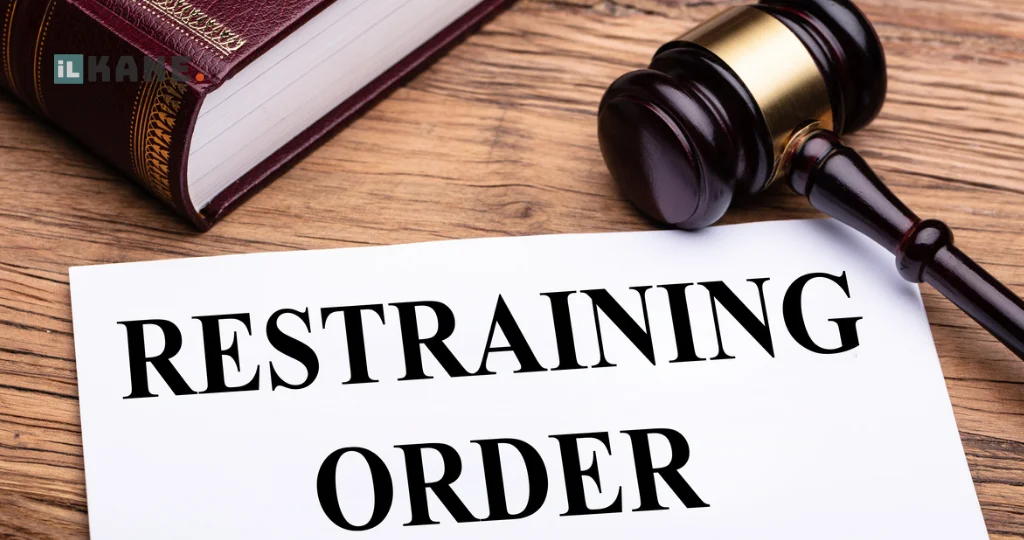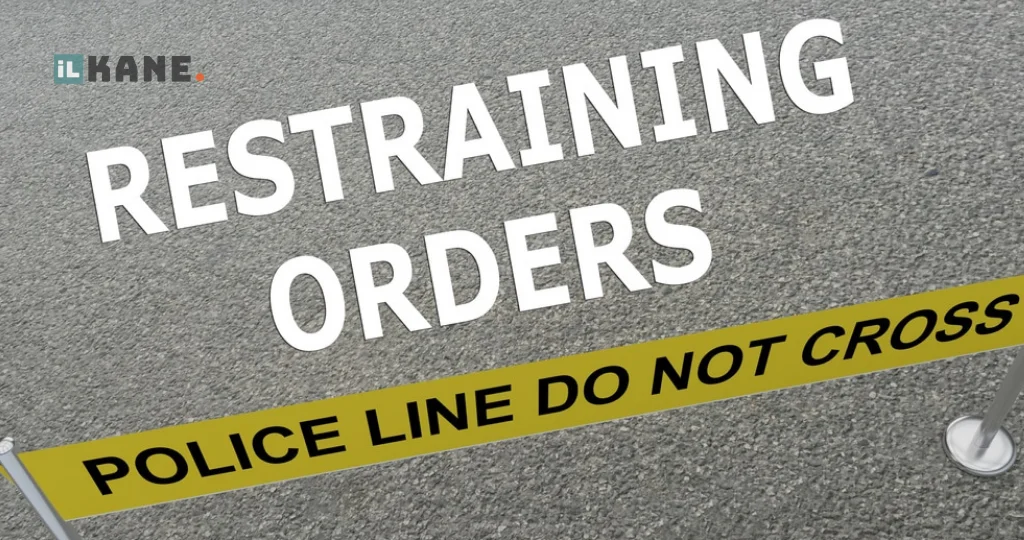A Step-by-Step Guide on How to Drop a Restraining Order in NJ Introduction: Welcome to our blog, where we provide a friendly guide on how to drop a restraining order in NJ. We understand that situations change, and sometimes, you may find yourself wanting to lift a restraining order. In this step-by-step guide, we will walk you through the process, ensuring that you have the necessary information to proceed. So, let’s dive in!
Understand the Importance of a Background Check:
Before we delve into the process of dropping a restraining order in NJ, it’s crucial to understand the significance of a background check. A background check is an essential tool used to gather information about another individual’s history, including criminal records, employment history, and more. It helps provide comprehensive insights to make informed decisions regarding personal safety.
Evaluate Your Circumstances:
Take some time to assess your current situation and determine whether dropping the restraining order in NJ is the right decision for you. Ensure that you prioritize your safety and consult with professionals, such as lawyers or counselors, who can provide guidance based on your specific circumstances.
Seek Legal Advice:
Consulting with a legal professional who specializes in family law or restraining order in NJ is highly recommended. They will provide expert advice tailored to your situation and guide you through the legal process. They can also help you understand the potential consequences of dropping the restraining order in NJ and ensure that your rights are protected.
File a Motion to Dismiss:
To drop a restraining order in NJ, you need to file a “Motion to Dismiss” with the court that issued the restraining order in NJ. This motion should clearly state your reasons for wanting to dismiss the order. It’s crucial to follow the court’s specific guidelines and procedures to ensure your motion is accepted.
Attend the Hearing:
After filing the motion, the court will schedule a hearing to review your request. During the hearing, it’s essential to present your case and explain why you believe the restraining order in NJ should be dropped. Please be ready to supply any required evidence or documentation to substantiate your request. Remember, remaining calm and respectful throughout the process will work in your favor.

Await the Court’s Decision:
Once the hearing is complete, the court will review the evidence and arguments presented by both parties. They will make a decision based on the best interests of all parties involved. It’s important to note that the court may deny your motion to dismiss if they believe there is a continued need for protection.
Comply with Court Orders:
If the court grants your motion to dismiss the restraining order in NJ, it’s crucial to adhere to any additional orders or conditions set forth by the court. Not adhering to these directives may lead to legal repercussions.
We hope this step-by-step guide has offered valuable insights into how to drop a restraining order in NJ. Remember, seeking legal advice and guidance throughout the process is essential. Your safety and well-being should always remain the top priority.
Clearing Your Name: Dropping a Restraining Order in NJ:
Welcome to our blog, where we provide valuable information to help you navigate the legal landscape. In this post, we will discuss the process of dropping a restraining order in N Jand how it can help clear your name. If you’ve been falsely accused or the circumstances have changed, it’s important to understand the steps involved. Read on to find out how to remove a restraining order in NJ and regain your peace of mind.
Understanding the Impact of a Restraining Order:
A restraining order in NJ is a court order that prohibits an individual from contacting or coming near another person. While it serves as a crucial tool to protect victims of harassment, domestic violence, or stalking, sometimes situations change, and false accusations can have severe consequences. It is essential to address the issue promptly to clear your name and restore your reputation.
Assessing the Need for a Background Check:
Before proceeding, it’s essential to determine whether a background check is required. In some cases, a background check may be necessary to gather evidence that supports your claim. Consulting with an experienced attorney can help you assess the situation and determine the best course of action.
Seek Legal Counsel:
When facing the daunting task of dropping a restraining order in NJ, it’s crucial to seek legal counsel. An attorney specializing in family law or criminal defense can guide you through the process and provide the necessary support. They will help you gather evidence, navigate the legal system, and present your case effectively.
Document Changes in Circumstances:
To successfully drop a restraining order, you must demonstrate that the circumstances have changed since the order was issued. Document any significant changes, such as improved communication, counseling, or therapy sessions attended by both parties. Each case is unique, and your attorney can advise you on the specific evidence required to strengthen your case.
File a Motion to Vacate or Modify the Order:
To initiate the process of dropping a restraining order, you will need to file a motion to vacate or modify the order. Your attorney will draft the necessary legal documents and guide you through this step. It’s crucial to provide accurate and detailed information to support your request.
Attend Court Hearings:
Once you file the motion, you will need to attend court hearings to present your case. Be prepared to answer questions and provide supporting evidence. Your attorney will guide you through the proceedings and ensure that your rights are protected.
Cooperate with the Court:
Throughout the process, it’s essential to cooperate fully with the court and follow all the legal procedures. Maintain a respectful and friendly demeanor during court hearings, demonstrating your willingness to resolve the matter amicably.

Dropping a restraining order in New Jersey can be a complex and emotionally challenging process. However, with the guidance of an experienced attorney, you can take the necessary steps to clear your name and restore your reputation. Remember, seeking legal counsel, documenting changes in circumstances, and cooperating fully with the court are key to successfully dropping a restraining order. By following these steps, you can regain your peace of mind and move forward with confidence.
Disclaimer:
This blog post is intended solely for providing information and should not be regarded as legal advice. It is always recommended to consult with a qualified attorney for guidance on your specific situation.
Protecting Your Rights: A Guide to Dropping a Restraining Order in NJ Having a restraining order in place can be a necessary step to ensure your safety and well-being. However, there may come a time when you feel that the restraining order is no longer necessary or that you wish to have it dropped. In this guide, we will walk you through the process of dropping a restraining order in New Jersey, while keeping your rights protected.
Before we dive into the process, let’s understand what a restraining order is and why it is important. A restraining order, also known as a protective order, is a legal document issued by the court to protect individuals from physical, emotional, or financial harm caused by another person. It prohibits the restrained person from contacting or coming near the protected person, their home, workplace, or other designated locations.
Now, let’s explore the steps to dropping a restraining order in New Jersey:
Evaluate your situation:
Take the time to reflect on your circumstances and assess whether dropping the restraining order is the right decision for you. Consider the reasons you initially obtained the order and whether those concerns have been sufficiently addressed.
Seek legal advice:
It is crucial to consult with an experienced attorney who specializes in family law or domestic violence cases. They can provide you with personalized guidance based on your specific situation and help you understand the potential consequences of dropping the order.
Gather evidence:
If you decide to proceed with dropping the restraining order, it is recommended to gather any evidence that supports your decision. This might include records of positive changes in the restrained person’s behavior, testimonials from trusted individuals, or any other relevant information that demonstrates a decrease in risk.
File a motion with the court:
To officially initiate the process of dropping a restraining order, you will need to file a motion with the court that issued the order. This motion should outline the reasons for your request and include any supporting evidence you have gathered. It is essential to follow the court’s specific instructions and provide all required documentation.
Attend the court hearing:
Once your motion is filed, a hearing will be scheduled where you will have the opportunity to present your case to the judge. It is crucial to prepare yourself by reviewing your motion and evidence, and potentially even seeking legal representation to advocate for your interests during the hearing.
Cooperate with the court’s decision:
Ultimately, the final decision to drop the restraining order rests with the court. If the judge grants your request, it is essential to fully understand the terms and conditions of the order being lifted. Always prioritize your safety and consult with legal professionals to ensure your rights are protected throughout the process.
It is worth noting that dropping a restraining order does not guarantee that the restrained person will no longer pose a threat to your safety. If you feel that your safety is at risk at any time, it is crucial to contact the appropriate authorities and legal professionals for assistance.
Conclusion
In conclusion, dropping a restraining order is a personal decision that requires careful consideration and legal guidance. By following the steps outlined in this guide and seeking professional advice, you can protect your rights while navigating the process in New Jersey. Remember, your safety is of utmost importance, and it is essential to prioritize it throughout the entire process.
For more information on related topics like background checks and additional legal resources, please visit our website or consult with legal professionals specializing in family law or domestic violence cases.
